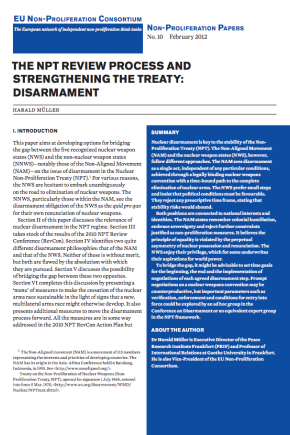The NPT Review Process and Strengthening the Treaty: Disarmament
Nuclear disarmament is key to the stability of the Non-Proliferation Treaty (NPT). The Non-Aligned Movement (NAM) and the nuclear weapon states (NWS), however, follow different approaches. The NAM sees disarmament as a single act, independent of any particular conditions, achieved through a legally binding nuclear weapons convention with a time-bound path to the complete elimination of nuclear arms. The NWS prefer small steps and insist that political conditions must be favourable. They reject any prescriptive time frame, stating that stability risks would abound. Both positions are connected to national interests and identities. The NAM states remember colonial humiliation, embrace sovereignty and reject further constraints justified as non-proliferation measures. It believes the principle of equality is violated by the perpetual asymmetry of nuclear possession and renunciation. The NWS enjoy their privilege, which for some underwrites their aspirations for world power. To bridge the gap, it might be advisable to set time goals for the beginning, the end and the implementation of negotiations of each agreed disarmament step. Prompt negotiations on a nuclear weapons convention may be counterproductive, but important parameters such as verification, enforcement and conditions for entry into force could be explored by an ad hoc group in the Conference on Disarmament or an equivalent expert group in the NPT framework.

